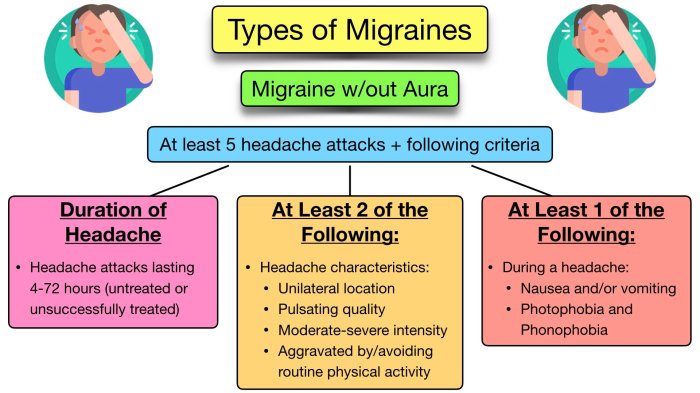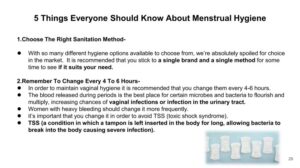
Migraine management is an essential journey for many individuals navigating the often debilitating effects of migraines. These intense headaches can be triggered by various factors, making understanding and managing them critical for a better quality of life. From recognizing the signs and triggers to exploring treatment options, this overview invites readers to discover effective strategies to alleviate symptoms and regain control.
As we delve into the complexities of migraines, we will explore conventional treatments, alternative therapies, and lifestyle adjustments that can make a significant difference. Understanding how to track symptoms and identify triggers empowers migraine sufferers to take proactive steps towards relief and enhance their overall well-being.
Understanding Migraine Management
Migraines are more than just severe headaches; they are a neurological condition that can significantly affect daily life. Understanding migraines, their types, triggers, and management strategies is crucial for those who experience them. By grasping these elements, individuals can take proactive steps towards effective migraine management and improve their quality of life.
Migraines can be classified into several types, primarily including Migraine with Aura and Migraine without Aura. Migraine with Aura involves sensory disturbances before the headache phase, such as visual changes or tingling sensations, while Migraine without Aura is characterized by unilateral head pain without preceding neurological symptoms. There are also Chronic Migraines, which occur 15 or more days per month, and Hemiplegic Migraines, a rare form that can cause temporary paralysis or weakness on one side of the body.
Each type can present differently, which is essential for accurate diagnosis and treatment.
Common Triggers of Migraines
Identifying potential triggers is a crucial step in managing migraines, as these factors can vary widely among individuals. Triggers may be environmental, dietary, lifestyle-related, or even emotional. Recognizing and avoiding these triggers can help reduce the frequency and severity of migraine attacks. The following are common triggers that many people report:
- Stress: Emotional or physical stress can precipitate migraine attacks.
- Certain Foods: Aged cheeses, processed meats, and foods containing MSG are known triggers.
- Caffeine: Both excessive caffeine intake and withdrawal can lead to migraines.
- Hormonal Changes: Fluctuations in hormones, particularly in women, can trigger migraines.
- Weather Changes: Changes in barometric pressure or extreme weather conditions can provoke migraines.
- Sleep Patterns: Irregular sleep or lack of sleep is a frequent contributor to migraines.
The Importance of a Migraine Diary
Keeping a migraine diary is an effective tool for individuals experiencing migraines. A migraine diary helps track symptoms, frequency, duration, and potential triggers, providing valuable insights for both the individual and healthcare professionals. By documenting the details of each migraine episode, individuals can better understand their condition and identify patterns that may not be immediately apparent.
A comprehensive migraine diary should include the following details:
- Date and Time: When the migraine started and how long it lasted.
- Symptoms: Document the type and severity of pain, as well as any accompanying symptoms like nausea or sensitivity to light.
- Triggers: Note any potential triggers experienced before the migraine started.
- Treatments Used: Record any medications taken and their effectiveness in alleviating symptoms.
- Overall Well-being: Include notes on mood, sleep quality, and stress levels during the days leading up to the migraine.
The insights gained from a migraine diary can empower individuals to discuss their patterns with healthcare providers, leading to more personalized and effective treatment plans. The act of tracking also promotes self-awareness, allowing patients to recognize lifestyle adjustments that may mitigate their migraine experiences.
Conventional Treatment Approaches
Migraine management often involves a combination of medications and lifestyle adjustments aimed at providing relief from acute episodes and preventing future occurrences. Understanding the various conventional treatment approaches can equip individuals with the tools to navigate their migraine experiences more effectively.
Medications for Acute Migraine Relief
Acute migraine relief primarily involves the use of specific medications that target the symptoms during an attack. These medications can effectively alleviate pain and associated symptoms such as nausea and light sensitivity. The commonly prescribed medications include:
- Triptans: These are the first-line treatment for moderate to severe migraines. They work by stimulating serotonin receptors, leading to the constriction of blood vessels and reduction of inflammation. Examples include sumatriptan and rizatriptan.
- NSAIDs (Nonsteroidal Anti-Inflammatory Drugs): Medications like ibuprofen and naproxen can help reduce pain and inflammation when taken at the onset of a migraine.
- Ergots: Less commonly used than triptans, ergots like dihydroergotamine can be effective for certain individuals, particularly those who do not respond to triptans.
- Anti-nausea medications: Drugs such as metoclopramide can be prescribed to alleviate nausea and vomiting associated with migraines.
Preventative Treatments
Preventative treatments aim to reduce the frequency and severity of migraines. These treatments are taken regularly and may include medications that alter neurotransmitter levels or other biological pathways involved in migraine pathophysiology. Some widely used preventative medications include:
- Beta-blockers: Medications such as propranolol can stabilize vascular function and reduce the frequency of migraines by affecting blood flow and heart rate.
- Antidepressants: Certain antidepressants like amitriptyline can also be effective in preventing migraines, potentially due to their impact on neurotransmitter levels.
- Anticonvulsants: Drugs such as topiramate can prevent migraines by stabilizing electrical activity in the brain.
- CGRP inhibitors: These are newer medications that block the calcitonin gene-related peptide, a molecule involved in migraine attacks. Examples include erenumab and fremanezumab.
Lifestyle Modifications to Support Treatment
In addition to medications, lifestyle modifications can significantly complement migraine treatment approaches. These changes can help prevent triggers and manage stress, contributing to fewer migraine episodes. Consider the following lifestyle modifications:
- Regular Sleep Patterns: Maintaining a consistent sleep schedule can reduce the likelihood of migraines associated with sleep disturbances.
- Hydration: Staying well-hydrated is crucial, as dehydration can trigger migraine attacks.
- Dietary Adjustments: Identifying and avoiding food triggers, such as aged cheeses, processed meats, or artificial sweeteners, can be beneficial.
- Regular Exercise: Engaging in moderate physical activity can help reduce stress and improve overall well-being, which can mitigate migraine frequency.
- Stress Management: Techniques such as mindfulness, meditation, or yoga can help manage stress, a common migraine trigger.
Integrative and Alternative Therapies
As patients seek effective ways to manage migraines, many are turning to integrative and alternative therapies. These approaches often complement conventional treatments and provide a holistic framework that considers both body and mind. By exploring these therapies, individuals may discover valuable strategies that work for their unique migraine triggers and patterns.Acupuncture and herbal remedies have gained traction as alternative treatment options for migraine management.
Acupuncture involves inserting thin needles into specific body points to alleviate pain and improve overall well-being. Research suggests that acupuncture may reduce the frequency and intensity of migraines. Patients often report experiencing a sense of relaxation and decreased stress, which can be beneficial, considering stress is a common trigger for many individuals.
Herbal Remedies
Herbal remedies can also play a significant role in managing migraines. Several herbs have shown promise in clinical studies, offering natural alternatives to pharmaceuticals. Some notable herbs include:
- Butterbur: This herb has been found to reduce the frequency of migraines by stabilizing blood vessel function.
- Feverfew: Traditionally used for migraine relief, feverfew may help decrease the intensity and duration of migraine attacks.
- Ginger: Known for its anti-inflammatory properties, ginger may help alleviate nausea associated with migraines.
These herbal treatments can be effective, but it’s essential for patients to consult healthcare providers before starting any new regimen, as interactions with other medications can occur.Nutritional choices significantly impact migraine management, making nutrition an essential aspect. A balanced diet rich in whole foods can help minimize migraine triggers. Foods high in magnesium, omega-3 fatty acids, and antioxidants are particularly beneficial.
For instance, leafy greens, fatty fish, and nuts can be incorporated to enhance overall health.
Mental Health Strategies
Mental health strategies, such as cognitive behavioral therapy (CBT), have been identified as effective tools for managing migraines. CBT helps individuals identify and change negative thought patterns and behaviors that contribute to stress and, consequently, migraines. This psychological approach enables patients to develop coping strategies and reduce anxiety, which can be a significant trigger. Incorporating relaxation techniques like mindfulness and meditation can also support the mental aspect of migraine management.
Patients often find that these practices help reduce the overall frequency of migraine episodes by promoting a sense of calm and reducing stress levels.In conclusion, integrative and alternative therapies, including acupuncture, herbal remedies, nutrition, and mental health strategies, offer a comprehensive approach to migraine management. By exploring these options, individuals can find a personalized pathway to alleviate their symptoms and improve their quality of life.
Specialized Care and Support

Managing migraines effectively often requires a comprehensive approach that involves a range of healthcare professionals. Understanding the roles of these specialists can empower individuals dealing with chronic migraines to seek the appropriate support and treatment. This section highlights the contributions of various healthcare providers and Artikels valuable resources available for migraine sufferers.
Role of Healthcare Professionals in Comprehensive Migraine Management
Healthcare professionals play a crucial role in the diagnosis, treatment, and ongoing management of migraines. Collaborative care typically includes neurologists, primary care physicians, pain management specialists, and mental health professionals. Each provider contributes unique expertise that can enhance patient outcomes.Neurologists are often the first point of contact for patients experiencing migraine symptoms. They specialize in diagnosing and treating neurological conditions and can provide tailored medication regimens.
Primary care physicians, on the other hand, help manage overall health and can offer lifestyle recommendations to improve migraine frequency and severity. Pain management specialists focus on pain relief strategies, which may include medication, nerve blocks, or other advanced techniques. Finally, mental health professionals address the emotional and psychological aspects of chronic migraine, offering therapies like cognitive-behavioral therapy (CBT) that can help reduce the impact of migraines on daily life.
Support Groups and Resources Available for Migraine Sufferers
Connecting with others who share similar experiences can be invaluable for migraine sufferers. Support groups provide emotional support, practical advice, and a sense of community. Below is a list of notable organizations and resources:
- The Migraine Trust: Offers information, support, and advocacy for people affected by migraines.
- American Migraine Foundation: Provides education and resources for patients and healthcare providers.
- Migraine.com: An online community for sharing experiences and learning about treatments.
- National Headache Foundation: Focuses on education and research while providing resources for patients.
Additionally, many local hospitals and clinics offer in-person support groups for migraine sufferers, where individuals can meet regularly to share experiences and coping strategies.
Comparison of Traditional vs. Alternative Treatment Efficacy in Managing Chronic Migraines
Both traditional and alternative treatment modalities exist for managing chronic migraines, each with its own efficacy and benefits. Traditional treatments typically involve medications, such as triptans, anti-inflammatory drugs, and preventive therapies like beta-blockers or anticonvulsants. Evidence supports their effectiveness in reducing the frequency and severity of migraine attacks for many patients.In contrast, alternative therapies, including acupuncture, biofeedback, herbal supplements, and dietary modifications, have gained popularity among patients seeking holistic approaches.
While research on these therapies is still developing, some studies suggest that acupuncture may significantly reduce headache frequency and intensity. For example, a study published in the journal “Headache” found that patients receiving acupuncture experienced a 50% reduction in headache days compared to those receiving standard care.It’s essential for individuals to discuss the integration of both traditional and alternative treatments with their healthcare providers to create a personalized management plan.
The combination of these approaches may enhance effectiveness and provide a broader range of options for those struggling with chronic migraines.
Child Health and Migraines

Migraines in children can be quite different from those experienced by adults, often making diagnosis and management challenging. Understanding how migraines present in younger individuals is crucial for effective treatment and support. This segment explores the unique characteristics of migraines in children, the tailored treatment options available, and the vital role of parental involvement in managing these conditions.Children often experience migraines differently than adults, both in their symptoms and frequency.
While adults may have a clear pattern of triggers and symptoms, children can present with more varied symptoms, including abdominal pain and nausea, which might be misinterpreted as other ailments such as gastrointestinal issues. Symptoms can also manifest as irritability, mood changes, and difficulty concentrating, making it essential for parents and caregivers to recognize these subtle signs. Additionally, the duration and intensity of migraines in children can vary widely, with some experiencing shorter, less intense episodes compared to adults.
Treatment Options for Pediatric Migraine Sufferers
Effective treatment for migraines in children must be approached with care, considering both pharmacological and non-pharmacological strategies. Treatment options should be tailored to the child’s age, development, and specific migraine characteristics. Medications commonly prescribed may include:
- Over-the-Counter Pain Relievers: Simple analgesics such as acetaminophen or ibuprofen can be effective for mild cases.
- Prescription Medications: For more severe migraines, triptans may be prescribed, although they are not typically recommended for children under 12.
- Preventive Medications: In cases of frequent migraines, pediatricians may consider prescribing daily medications such as beta-blockers, antidepressants, or anticonvulsants.
Non-pharmacological treatments play a crucial role in managing pediatric migraines. These may include:
- Behavioral Therapy: Cognitive-behavioral therapy can help children cope with stress and recognize triggers.
- Dietary Modifications: Identifying and avoiding food triggers can significantly reduce migraine frequency.
- Regular Sleep Patterns: Establishing consistent sleep routines helps minimize migraine occurrences.
Parental Support and Education in Managing Migraines
The involvement of parents and caregivers is essential in managing a child’s migraines effectively. Education about the condition can empower parents to identify triggers, recognize symptoms, and implement coping strategies. Key aspects of parental support include:
- Open Communication: Encouraging children to express their feelings and symptoms can help in early identification of migraines.
- Monitoring Triggers: Keeping a headache diary to track patterns can aid in recognizing specific triggers and developing prevention strategies.
- Collaborative Care: Working closely with healthcare providers ensures a comprehensive approach to treatment, adjusting strategies as necessary.
“Active involvement and understanding of a child’s migraine condition can significantly enhance their management and overall quality of life.”
Lifestyle and Fitness Considerations
Managing migraines effectively often involves more than just medication; lifestyle and fitness play a crucial role. Making subtle changes in daily routines and incorporating specific fitness activities can significantly impact the frequency and severity of migraine episodes. Understanding the intricate connection between exercise, relaxation techniques, and hydration is key to creating a well-rounded migraine management strategy.
Fitness Routines That Help Reduce Migraine Frequency
Engaging in regular physical activity can be beneficial for individuals prone to migraines. Certain exercises promote overall wellness, which may help lower the likelihood of migraine occurrences. Here are some fitness routines that are often recommended:
- Yoga: This low-impact exercise emphasizes stretching, balance, and controlled breathing, which can help relieve tension and reduce stress, two known migraine triggers.
- Aerobic exercise: Activities like walking, cycling, or swimming can enhance cardiovascular health and help manage stress levels, potentially decreasing the frequency of migraines.
- Strength training: Incorporating weights or resistance bands can improve muscle tone and may alleviate physical stress that contributes to migraines.
Regularity in these activities is essential, as consistency tends to yield the best results over time.
Daily Routine Incorporating Relaxation Techniques
Incorporating relaxation techniques into your daily routine can be a powerful strategy for managing migraine symptoms and preventing attacks. Here are steps to create an effective routine:
1. Morning Stretching
Start each day with gentle stretching exercises to alleviate muscle tension and promote relaxation.
2. Mindfulness Meditation
Dedicate at least 10 minutes daily to mindfulness meditation to enhance mental clarity and reduce stress.
3. Breathing Exercises
Practice deep breathing techniques throughout the day, especially during stressful moments, to help calm the nervous system.
4. Scheduled Breaks
Ensure to take short breaks during work or daily tasks to avoid prolonged stress, which can trigger migraines.Incorporating these techniques not only helps in managing migraines but also contributes to overall mental and emotional well-being.
Hydration and Its Relationship to Migraine Occurrences
Maintaining proper hydration is crucial in minimizing migraine frequency and severity. Dehydration is a recognized trigger for many individuals, and staying adequately hydrated can prevent the onset of migraines. Here are important points regarding hydration:
- Daily Water Intake: Aim for at least 8 glasses of water per day, adjusting based on activity levels and climate conditions.
- Hydrating Foods: Incorporate water-rich foods such as cucumbers, watermelon, and oranges into your diet to boost hydration levels.
- Monitor Caffeine and Alcohol: Limit caffeine and alcohol consumption, as they can contribute to dehydration and may trigger migraines in some individuals.
Keeping track of your hydration levels can be as simple as carrying a water bottle and setting reminders to drink throughout the day.
Ultimate Conclusion
In conclusion, effective migraine management requires a comprehensive approach that includes understanding triggers, exploring various treatment options, and making lifestyle changes. By combining conventional methods with integrative therapies, individuals can find personalized strategies that work best for them. As we continue to learn about migraines and develop new management techniques, hope remains for those affected, enabling them to lead fuller, more enjoyable lives.
Question Bank
What are some common migraine triggers?
Common triggers include stress, certain foods, hormonal changes, weather changes, and lack of sleep.
How can I keep a migraine diary?
A migraine diary can be kept by noting the date, duration, intensity, potential triggers, and any medications taken during an episode.
Are there specific diets that help with migraines?
Some people find relief by avoiding trigger foods like aged cheeses, processed meats, and alcohol, while others benefit from diets rich in magnesium and omega-3 fatty acids.
How effective is acupuncture for migraines?
Acupuncture has been shown to reduce the frequency and intensity of migraines for some individuals, although results can vary.
Can children experience migraines?
Yes, children can experience migraines, often showing different symptoms than adults, and they require tailored treatment approaches.





